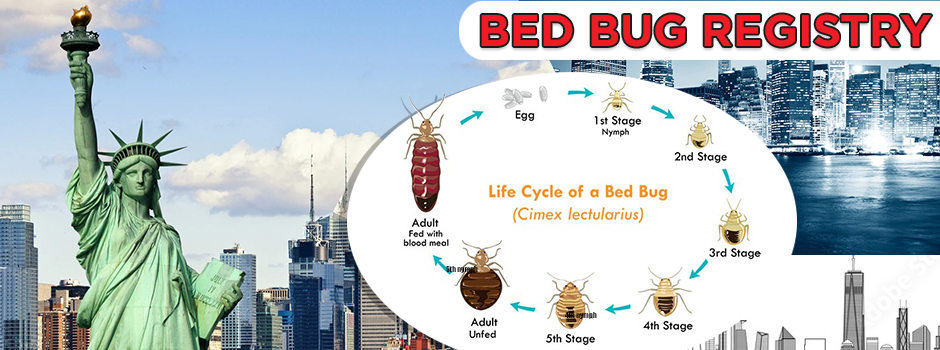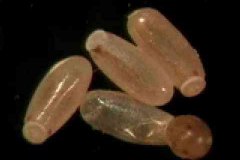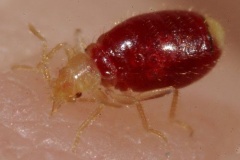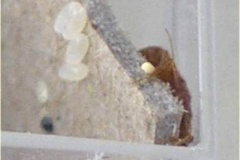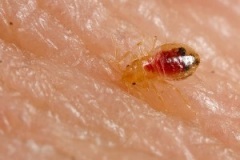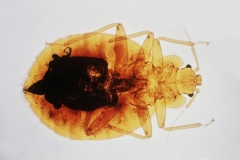Youve probably read or heard about the horror stories associated with the small insects that feed on human blood in the night. They attack when you are sleeping and are quite adaptable in most of the environments catering to humans. This is the life of a bed bug and contrary to popular belief they surround themselves beyond unsanitary and unkempt conditions even striking the ritziest of five-star hotels. While professional extermination is almost always the only way to eliminate the problem, there are a few home remedies associated with the dreaded bed bug.
NEW Grandmas Natural Recommended Bed Bug Killer Formula
Waiting until the night to attack their victims, the small nocturnal insect known as the bed bug belongs to the family Cimicidae, which is known to feed on blood. While humans are commonly referred to as the main sufferers of this pest, the bed bug also seeks out other warm-blooded hosts for their meals. With a past that traces back to ancient history, the common bed bug (Cimex lectularius) has learned to successfully adapt to the same living spaces as humans [1].
With a preference to temperate climates, the bed bug is often found in warm temperatures, especially in locales such as Florida and the tropics of West Africa and South America. It is there that various species of the bed bug infest poultry, bats, humans, and other types of birds.
When the bed bug reaches maturity, it is reddish brown in color with a flattened, oval appearance. On their body, microscopic hairs give off a banded appearance. They possess no wings. Some people believe that bed bugs are so small that they cannot be seen by the naked eye. This is not the case, as some adults reach length of 4 to 5 millimeters (which translates into 1/8 to 3/16 of an inch). Their size is comparable to that of an apple seed. Since bed bugs are extremely shy and wary of others, an infestation of the insect is quite hard to pinpoint.
When feeding, the bed bug is typically active only at night with the most activity taking place an hour before dawn. Using two hollow tubes, the bed bug pierces the skin of their host and draws blood. One tube injects an anticoagulant into their victim, while the other tube is used for blood extraction. Average feeding times are about five minutes, where the bug then returns to their place of hiding. At the time of the bite, a victim is unaware, although late reactions come minutes to hours later.
In the home, the bed bug seeks many different places to hide during the day, including linens, drapery, headboards, desks, nightstands, artwork frames, mattresses, and clothing. With the use of a flashlight, you may find a bed bug crawling about at night. Additional signs, such as blood spots help detect an infestation.
The best way to detect a bed bug infestation is to call upon a professional, who will complete an inspection of your home. In case you wish to analyze your surroundings before hiring someone out of the Yellow Pages, some of the signs to seek out include:
Even though you may display bed bug bites on your body that occur during the night, this is not a sure sign that a bed bug was the culprit.
The sight of dried blood (referred to as fecal spots) may appear on the box spring, behind the headboard, as well as about the seams of a mattress.
A bed bug sheds skin during their nymphal stage, which looks like a hollowed-out bug.
About 1 millimeter in length, the eggs of the bed bug are rather difficult to pinpoint, but are still visible resembling the shape of rice.
Bed bugs do not feed on dirt, debris, or crumbs, meaning an unclean environment is not the primary target for the insect to dwell. Bed bugs feed on blood and it is advantageous for them to seek out places where warm-blooded individuals are present. This is why places, such as hospitals, hotels, motels, inns, and cruise ships are perfect living quarters for a bed bug.
When bed bugs find their way into a home, there are plenty of different methods to their madness. When guests of a hotel settle in for the night, bed bugs may climb into their luggage, where they are then transported to a new environment. Bed bugs also travel by way of used furniture purchased at a garage sale or thrift shop. The same is true with used clothing, as bed bugs are known to hide in the crevices and folds of material.
In multi-unit dwellings, such as condominiums and apartment buildings, bed bugs find their way throughout the premises by moving about the walls, cracks, pipes, and wires. New residents may bring bed bugs into a living space through their moving boxes, mattresses, pillows, and other belongings.
The pathogens found in the bodies of bed bugs have been connected to plague and hepatitis B, yet no conclusions have been made as to whether or not the insect is able to pass on disease to humans. While the threat of disease is of no consequence, the bed bug is seen as a rather unclean visitor that affects the sanitation of a household. One is embarrassed to admit they have bed bugs in their home. Additional negative outcomes associated with bed bugs include:
Those who scratch their bed bug bites may develop skin infections, which may leave behinds scars.
The sight of a cluster of bed bug bites is quite alarming, especially when they claim large stretches of visible skin. The back, legs, and arms are common places that bed bugs attack.
A bed bug infestation is rather stressful with the potential to cause delusional parasitosis or even post-traumatic stress disorder in extreme cases.
A handful of people may experience anaphylactic shock, as they suffer an allergic reaction to bed bug saliva.
Since bed bugs are very difficult to remove from a home or hotel, professional means of extermination creates extra bills for a family or business.
A strong scent comes with the presence of bed bugs, as they emit an oil-like liquid from their bodies.
When it comes to bed bugs, there isnt much a homeowner can do to get rid of these pesky intrusions on their own. Before calling professional help, some have found slight success with the following home remedies for bed bugs:
While not a definite fix, spraying rubbing alcohol where bed bugs thrive may contain the problem by killing some on contact.
Some insecticides comprised of pyrethrins and canola oil are sometimes used by those who wish to lay down a home remedy that is safe for children and pets.
It is not uncommon to see some pest control companies use steam treatments to deal with mattresses and other pieces of upholstered furniture. While very limited effectiveness is associated with this type of remedy, it shows great promise in treating items with less than inch of penetration. At home, one may use small steam cleaners to care for their mattresses and other bedding selections.
Placing clothing, footwear, rugs, toys, stuffed animals, backpacks and other non-launderable items in the dryer for a certain length of time can conveniently remove bed bugs. When an average clothes dryer is run for five minutes at low, medium or high heat, they generate temperatures of about 140, 150 and 180 degrees (respectively). It is believed that when drying a bundle of infected clothes, high temperatures are able to kill bed bugs. It is suggested to run the dryer for more than 20 minutes.
Since temperatures over 113 degrees are said to kill bed bugs, it is suggested to wash and dry clothing and linens at high temperatures. When living in a hot desert climate, you may hang your bedding and clothes in the beaming sun to destroy lingering bed bugs.
To get rid of any bed bugs on your mattress, pillows, clothing or floor, you can use the sticky side of duct tape as a removal tool. You can also wrap the legs and rails of your bed with the sticky side of duct tape to help keep the pests away from your sleeping area.
Since the odor of most scented dryer sheets is repulsive to bed bugs, you can create a layer of Kryptonite by lifting your mattress and placing 8-10 sheets of scented fabric softener between the box spring and mattress. Repeat the same number of sheets on the surface of your mattress before putting your sheets back on. Stash one to two dryer sheets inside of your pillowcases as well. Use the sheets as protection against the bugs by placing in your clothes and throughout your linen closets.
Some people have used the drying-out (desiccation) properties of baking soda as a way to get rid of bed begs. One approach is to dip a paintbrush into a bowl of baking soda, and use the brush to spread a light layer of the soda around the cracks and crevices where you believe bed bugs are hiding. Dont forget to address between the mattress and bed spring. Cover all surfaces of the mattress, including the frame. Vacuum the baking soda after a couple of days, and then reapply treatment.
The scent of lavender is a turn-off for bed bugs; therefore you may want to try placing fresh lavender or rubbing the oils of the plant around your bed and other areas where the pests are active.
In addition to lavender oil, the essential oils of rosemary and eucalyptus are also powerful against pesky bed bugs [4]. Add a few drops of all three oils into a cup of water, and then spray onto the bugs and around your sleeping area to kill and get rid of the pests.
Mint is another herb that bed bugs arent too fond ofand when left around the house, it can act as a bed bug repellent. Even early Native Americans used the leaves of wild mint to get rid of bed bugs by crushing the leaves and sprinkling around sleeping areas. They also tucked mint leaves inside of the cradle board of babies and small children. Before going to sleep, theyd also rub crushed mint leaves across their skin. You can also try adding sachets of dried leaves between your mattress and in your linen closets.
Some say that cayenne pepper can stop bed bugs from entering spaces in your house. Try sprinkling some of the spice in certain areas, and see if the pests avoid crossing over it.
Since bed bugs cannot survive in temperatures greater than 113 degree Fahrenheit, the highest heat setting of a hair dryer can serve as a bed bug home remedy. After turning the dryer on, position the hot air over places that bed bugs frequent start with around your mattress. Place the hot air towards mattress seams and other crevices that may contain eggs. Continue heating the areas to get the best results your goal is to treat the surfaces for approximately 60 minutes to make sure all pests have died. To remove all traces of the bugs, vacuum the heated areas, and promptly clean the vacuum filter afterwards to prevent surviving pests or eggs from escaping.
The suction wand of a strong-powered vacuum can be used to remove bed bugs and their eggs from your sleeping quarters. Dont forget to target the seams of mattresses and box springs, along perimeters of carpets, under baseboards, and in any other spaces and crevices associated with the pests. You wont get all bugs and eggs with a single vacuum treatment, so repeating the process a couple of times is highly recommended.
Research suggests that the vast majority of bed bugsare found in or near the bed, as this is where most of the pests come to feed on their sleeping, unsuspecting victims. One of the first things you can do to treat a bed bug infestation is identify its existence and pinpoint the whereabouts of the pests. To inspect your sleeping area, focus on the mattress, box spring, bed frame and headboard. Using a flashlight and small mirror to aid your inspection, lift the mattress, address the seams, look at the surfaces, and eyeball the nooks and crannies of the box spring. For the best results, you may even want to dismantle your bed.
Resources
[1] http://en.wikipedia.org/wiki/Bed_bugs [2] http://medent.usyd.edu.au/bedbug/bedbugs_factsheet.pdf [3] http://www.getholistichealth.com/5617/4-home-remedies-to-kill-bed-bugs/ [4] http://www.ipm.ucdavis.edu/PMG/PESTNOTES/pn7454.html
Read more from the original source:
Effective Home Remedies for Bed Bugs | FULL GUIDE

 Residence
Residence  Location
Location 
